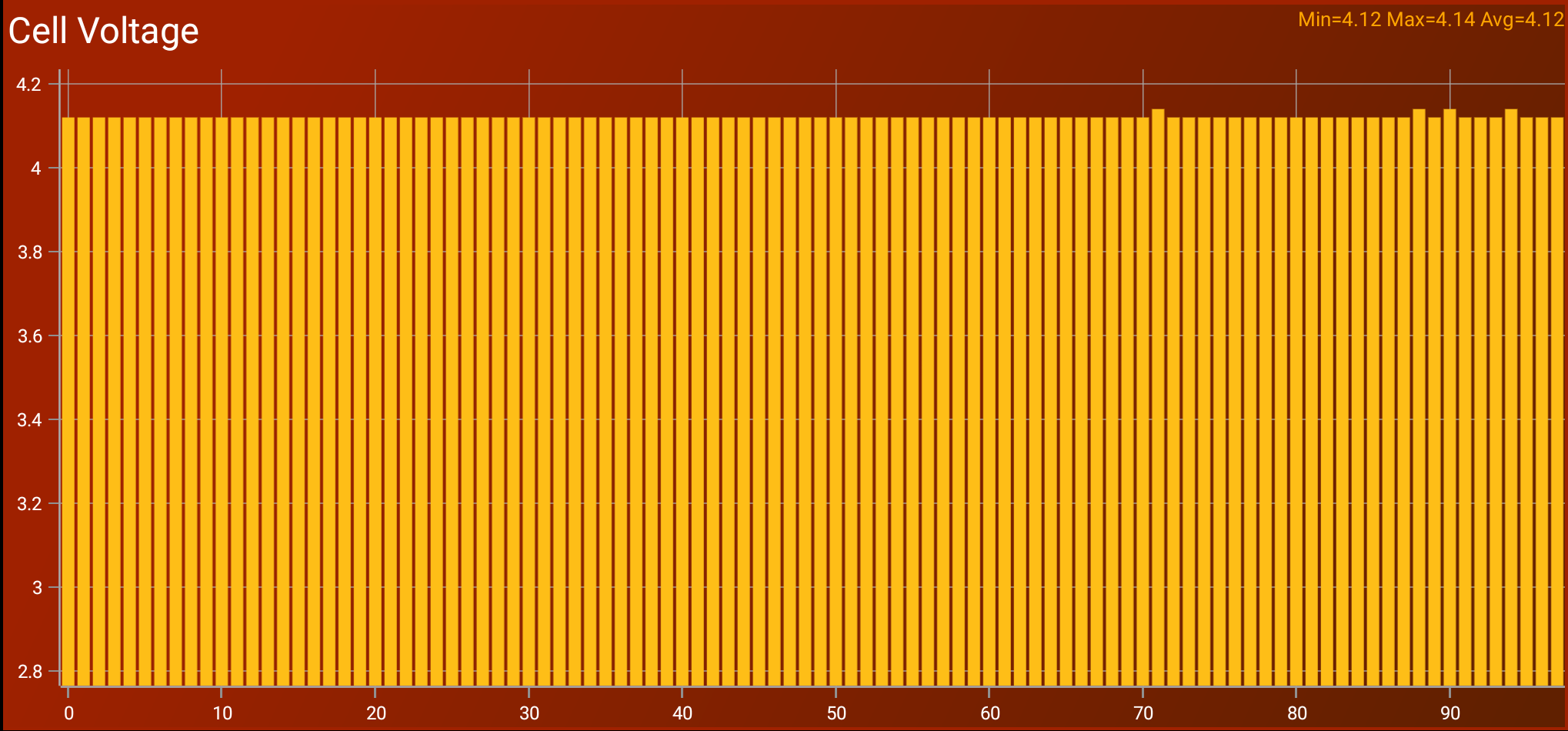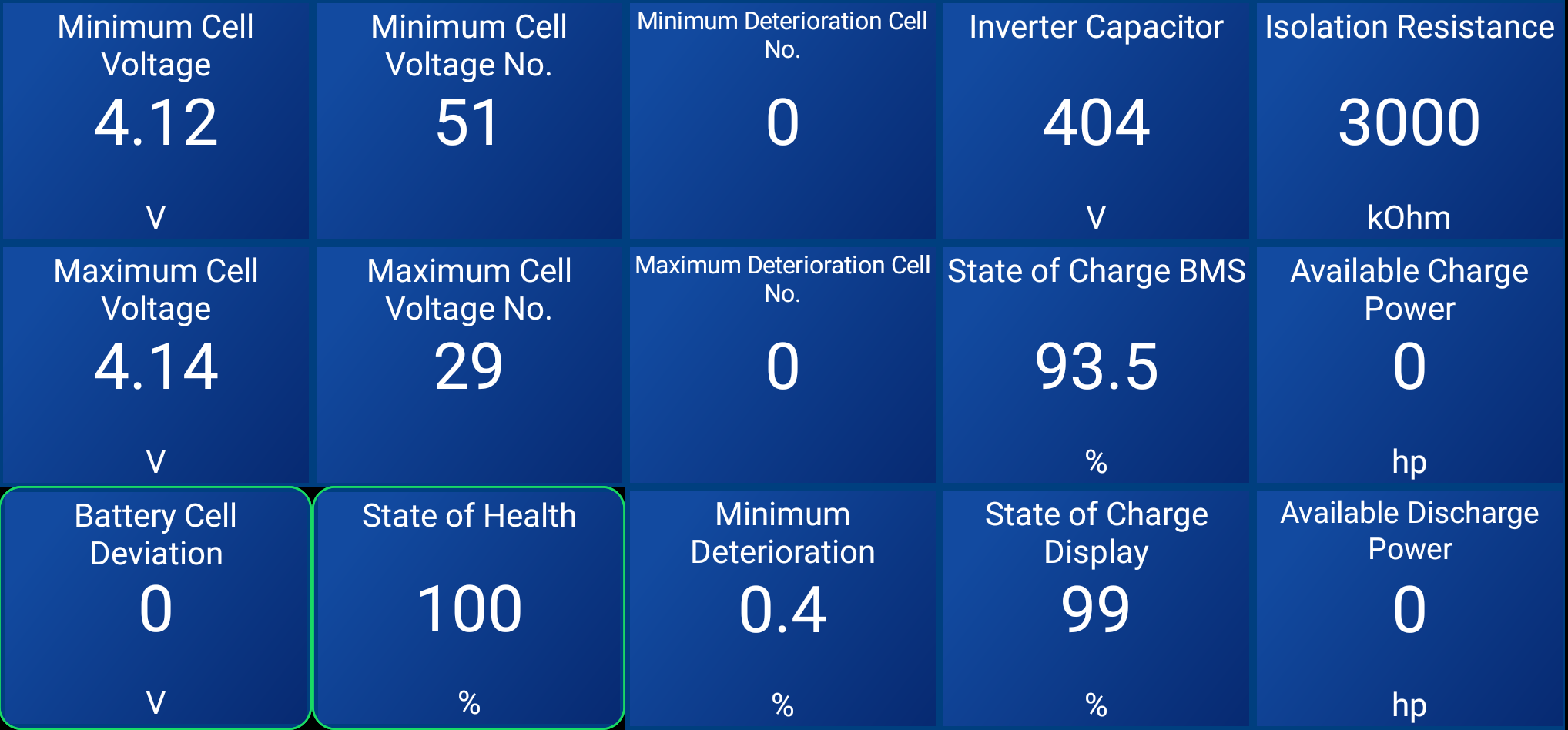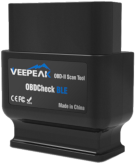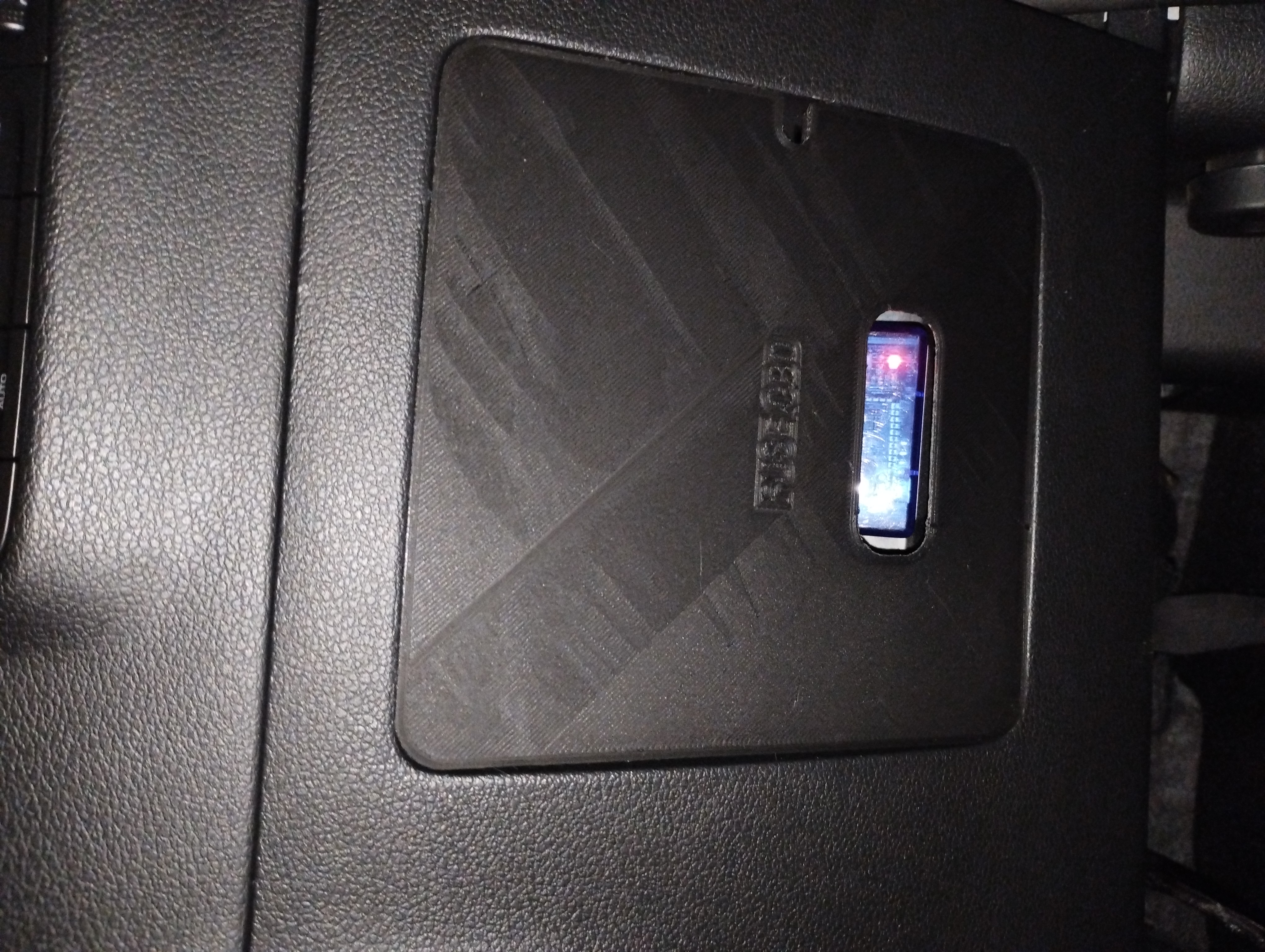Hyundai Kona (electric)
2020 150kW motor Hyundai Kona Premium 64kWh battery with an EVDB range of 245mi.
Tyres
The car was acquired with a mismatched tyre on the rear. Budget tyres represent more than 50% (£70) savings but (from watching YouTube videos) anecdotally make a 10% different to range. (20m/charge = > £1 every few weeks). But the grip differences can be dangerous (in wet conditions). The rear tyre that matched the front had an 1123 DOT date with around 1mm wear, so it was easy to replace the mismatched Mitchelin with a new 215/55R17 CI ECO CONTACT 6 94V @ £145 fully fitted from KwikFit (Dorking). These tyres give a weight of 670x2=1340kg per axel, this more than sufficient to support the car's 1760kg. I have not fitted the XL version of this tyre.
Battery
The Battery is the single most expensive part of an EV - if buying second hand it's a good idea to use something like CarScanner with an ELM OBDII device to look at the state of the individual cell packs.
Health in November 2020


In November 2023 I charged the battery to 100% for a planned 140mile trip, I took these readings a few hours after that charge completed.
The difference between the lowest & highest voltage cells is only 0.02v - this is a good indication there are no "bad" packs. There are 294 cells in a 98s3p arrangement. The voltage measurements here are per each of the 98 resulting packs and the 4.12-4.14v volt range correctly represents around 91-95% charge!
Charging
With this car "range anxiety" isn't so much a thing, but "charge anxiety" is... in 10 times we've visited public charge points 3 of them find someone else confused about the system.
Publically, Type 2 and CCS


The public charge infrastructure is fragmented. Attempts at aggregating (like Zapmap) result in technology failures and confusion. I've found it more reliable to use specific apps for specific charge points, in Dorking the most useful are Blink and Connected Kerb, Connected Kerb is significantly cheaper, but there are many more blink chargers.
I have been able to use a GeniePoint charger (at Morissons in Tamworth) with only a contactless card. When I arrived the charger was inop, but a call to the UK local number on the device had a friendly person reboot it and it worked perfectly. This has also been the cheapest charge so far at 23.3p/kWh for a 45kW CCS charge! <-- actually this was only partially billed... the GeniePoint charge was 79.0p/kwh
Privately, on the granny charger
I was able to use a 10m extension lead from a 13amp socket without issue. I set the charger to limit to 6amps (around 1.2kW) and there was no heating observed in any of the equipment
Frunk

The charge port in the Kona is in the front bumper. The only place to store charging cables is in the boot. This is less than ideal from a proximity point-of-view and, once used in wintery UK conditions, the cable is wet and dirty which means having some kind of weather proof receptacle in the boot.
Looking on YouTube for Kona Frunk it turns out to be quite a trivial task to mount a £6 32l plastic tub from B&M Stores in the bonnet to create a Frunk to hold the Type2 and Granny chargers. Adding gas struts to the bonet for convienience is a must.
I followed an approximation of a few similar videos and have had no adverse effect in over a month, I was pleased to see Robert Bilodeau's video showing evidence that heat from the AC converter is not significant.
 Data specific to my car is from an Android App (CarScanner) using an ELM OBDII
reader, specifically I bought a
Data specific to my car is from an Android App (CarScanner) using an ELM OBDII
reader, specifically I bought a 